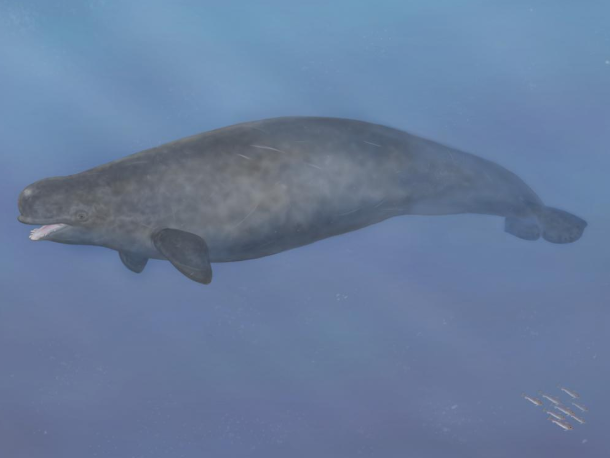The Independent's journalism is supported by our readers. When you purchase through links on our site, we may earn commission.
Hybrid ‘narluga’ whale discovered by scientists in Arctic
What do you get when you cross a narwhal with a beluga? A ‘narluga’, according to scientists who have shed light on skull from mysterious creature killed in 1980s

For almost 30 years, a highly unusual whale skull found in the Arctic has been gathering dust at the Natural History Museum of Denmark.
The specimen baffled scientists. It is larger than either a beluga or a narwhal, though it bears similarities to both, and has a small number of strange spiralling teeth angled outwards, which are unlike those of either species. No similar skulls have ever been found.
The skull was collected by Professor Mads Peter Heide-Jorgensen, a scientist from the Greenland Institute of Natural Resources, who spotted it on the roof of an Inuit hunter’s home on a remote island in Disko Bay.
Jens Larsen, who hunts only enough food to survive on, told him the skull had come from one of three bizarre whales he had shot in the late 1980s, of a species he had never seen before or since.
Just three species of whale are known to live in the Arctic all year round – the bowhead, the narwhal and the beluga.
Tragic photos show beached whales
Show all 15But the whales Mr Larsen saw were unlike those species. They had plain grey skin, beluga-like flippers and narwhal-esque tails. He suggested they could have been the hybrid offspring of a narwhal and a beluga, or were some kind of deformed beluga.
Professor Heide-Jorgensen convinced the hunter to donate it to the Natural History Museum of Denmark for analysis.
Thirty years later, research examining DNA from the skull has finally confirmed its improbable origins.
It was the hybrid offspring of a narwhal mother and a beluga father – a “narluga”.
“As far as we know, this is the first and only evidence in the world that these two Arctic whale species can interbreed,” said Eline Lorenzen, evolutionary biologist and curator at the University of Copenhagen’s Natural History Museum of Denmark.
“Based on the intermediate shape of the skull and teeth, it was suggested that the specimen might be a narwhal-beluga hybrid, but this could not be confirmed,” she added. “Now we provide the data that confirm that yes – it is indeed a hybrid.”
The animal’s strange amalgamation of teeth resulted in greatly different feeding habits to either of its parents, the scientists suggest. Analysis of the carbon and nitrogen in its bones indicate it likely fed on the seafloor in the manner of a walrus.
Belugas mainly feed on fish down to 500m, whereas narwhals have the capacity to feed on fish and squids at depths greater than 800m.
“This whale has a bizarre set of teeth,” said Mikkel Skovrind, a PhD student at the Natural History Museum and first author of the paper. “The isotope analysis allowed us to determine that the animal’s diet was entirely different than that of a narwhal or beluga – and it is possible that its teeth influenced its foraging strategy. Whereas the other two species fed in the water column, the hybrid was a bottom dweller.”
The researchers do not know what prompted the two species to mate, but said there is no precedent in existing fossil records.
Ms Lorenzen said: “We have analysed the nuclear genomes of a narwhal and a beluga, but see no evidence of interbreeding for at least the past 1.25 million years of their evolutionary histories. So, interbreeding between the species appears to be either a very rare or a new occurrence. To my knowledge, it has not been observed or recorded before.”
The research team used new analytical methods, which they hope may unlock the histories of other specimens.
“There are some true gems in the world’s natural history collections that can provide us with key insights into the evolution and diversity of life on Earth,” Ms Lorenzen added. “It is incredible when material – such as this skull, which has been stored in our collection for decades – can be revisited with new methodologies to gain novel biological insights.”
Mr Skovrind added: “It would be interesting to find out if similar hybrid whales have been spotted elsewhere.”
The research is published in the journal Scientific Reports.
Subscribe to Independent Premium to bookmark this article
Want to bookmark your favourite articles and stories to read or reference later? Start your Independent Premium subscription today.

Join our commenting forum
Join thought-provoking conversations, follow other Independent readers and see their replies